Funding for Multiuse Trails
Delaware & Lehigh Trail | Photo by Thom Carroll
Funding for multiuse trails and greenways takes a bit of ingenuity and plenty of research. Although Rails to Trails Conservancy does not directly fund the development of trails, there are many federal, state and local government funding mechanisms—as well as grants, partnerships and other creative funding methods—available.
An important part of any trail development process is creating a funding strategy to secure the capital needed to build your trail or trail network. A strong strategy includes funding from a number of sources and considers the full lifecycle of the trail, including maintenance costs.
Understanding the cost of building and maintaining trails is a crucial first step. The Capital Trails Coalition, an RTC TrailNation project, was able to create a cost estimate for the network in close collaboration with agency staff across the impacted jurisdictions. Aggregated regional data supplemented the estimate where costs weren’t locally known and assessed based on local, and perceived, difficulty. Having the estimate has helped the coalition gain additional public support and demonstrate the value of trails across the region.
When thinking about funding a project, it’s important to think about the entire life cycle cost of your network or spine, including land acquisition, planning, design, construction, maintenance and programming. Below are some potential funding sources divided among these various stages. You’ll see a short description of the funding program and the types of projects it supports. To learn more about this specific program, click on the link to read more. Also, be sure to use RTC’s Federal Funding Tool to match your project with a potential funding source.
Federal Funding Programs and Grants
In November 2021, Congress passed the Infrastructure Investment and Jobs Act, also called the Bipartisan Infrastructure Law. This law included the reauthorization of the federal surface transportation bill, which is the main source of public funding for trails and active transportation. It increased funds for these programs, supporting existing ones and introducing new opportunities for trails, walking and biking initiatives.
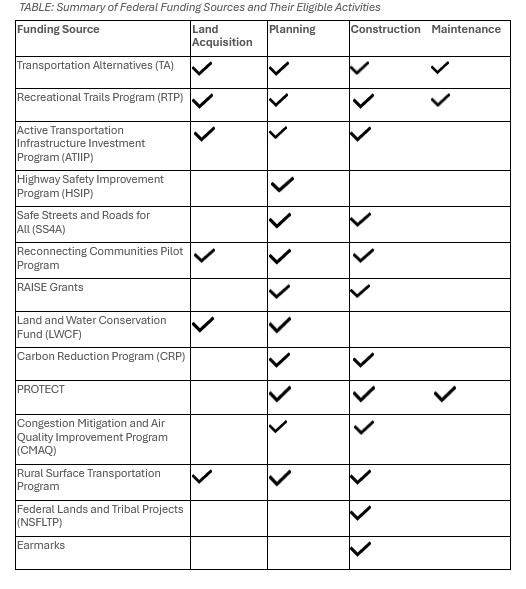
Transportation Alternatives
Transportation Alternatives (TA) is the largest source of federal funding for trails, walking and bicycling, providing dedicated formula funds for your projects, which can be used for acquisition, planning, construction and maintenance. Eligible activities include the conversion of abandoned railroad corridors into trails for nonmotorized transportation uses, and the “construction, planning and design of on-road and off-road trail facilities for pedestrians, bicyclists and other nonmotorized forms of transportation.” See this page for a complete list of eligible TA projects.
The U.S. Department of Transportation Federal Highway Administration (FHWA) allocates TA funding to states. To distribute this funding, state departments of transportation (DOTs) and metropolitan planning organizations (MPOs) administer their own competitive process and deal directly with applicants. The 2021 Bipartisan Infrastructure Law authorized nearly 70% more money for the legacy TA program (which includes the Recreational Trails Program) from $850 million to an average of $1.44 billion per year. The new guidance for the program encourages local communities to pursue new opportunities to address equity and connectivity needs in the communities they serve.
This vital funding is less likely to be diverted to unrelated purposes, as the new law constrains such transfers. In addition, the law allows states to use up to 5% of available funds for technical assistance to administer grants and assist local governments in applying. Several states are already implementing technical assistance programs that have resulted in stronger grant applications and TA projects being deployed faster, making TA grants easier to access and implement. Additionally, a change to the matching requirement could provide relief for low-income communities struggling to meet the often-elusive matching dollars to unlock TA. Previously, states were required to meet a 20% match for all projects. The new guidance now allows states to average 20%.
Interested in how your state is utilizing TA funds? Check out our Transportation Alternatives Data Exchange (TrADE) website for yearly reports going back to FY 2000. The TRADE website also provides information on basics of the TA program and tips for applying.
Recreational Trails Program (RTP)
This grant program, managed by trail administrators in each state, is designed to be competitive. Eligible projects include the maintenance and restoration of existing trails, development or rehabilitation of trailside and trailhead facilities and linkages, acquisition of necessary easements, associated administrative costs, and new trails and educational programs. At least 30% of all Recreational Trails Program (RTP) funds must be used for nonmotorized trails.
Unlike the TA program, private organizations are eligible for funds under the RTP, although this depends on the particular policies of each state.
Additional Federal Funding Sources
- The Active Transportation Infrastructure Investment Program (ATIIP) is a new program administered by the U.S. Department of Transportation (USDOT) that establishes a competitive grant program focused on connecting active transportation infrastructure. Funds can be used to strategically invest in projects that connect active transportation networks and spines, accelerating local and regional plans to create safe and convenient walking and biking routes to everyday destinations and to fill gaps in trails between communities.
- Highway Safety Improvement Program (HSIP): If you need funding for projects that prioritize safety, check out the Highway Safety Improvement Program (HSIP). Particularly, in states where there are a lot of deaths involving vulnerable road users, like pedestrians or cyclists, 15% of the funds are mandated to be used for improving their safety.
- Safe Streets and Roads for All is a new program that provides funds for the development and implementation of Comprehensive Safety Action Plans to support local initiatives aimed at addressing serious injuries and fatalities on roads and streets.
- If your project focuses on creating equitable transportation connections and dismantling divisive transportation infrastructure, consider the Reconnecting Communities Pilot Program. Regional trail proposals, especially those aiming to reconnect historically divided neighborhoods through old railroad corridors, could be competitive under this program.
- Rebuilding American Infrastructure with Sustainability and Equity (RAISE) grants, formerly called TIGER and BUILD, provide large-scale discretionary grants for all transportation related projects, including trails, walking and biking.
- The Land and Water Conservation Fund (LCWF) can provide land acquisition funding for outdoor recreation projects.
- For projects that reduce transportation-related greenhouse gas emissions, consider the Carbon Reduction Program. Importantly, all projects that are eligible for Transportation Alternatives funding (TA) are also eligible for Carbon Reduction Program funding.
- For projects that focus on climate resiliency, consider the new Promoting Resilient Operations for Transformative, Efficient, and Cost-saving Transportation (PROTECT) grant program. Trails and other pedestrian and bicycle infrastructure are eligible for funding as solutions to climate impacts. The PROTECT program offers both planning and construction grants, though only 40% of award funds can be used for new construction.
- The Congestion Mitigation and Air Quality Improvement Program (CMAG) can be used for projects that impact air quality or improve congestion.
- For projects based in rural areas, consider applying for the Rural Surface Transportation Program.
- For projects on federal or tribal lands, consider applying for the Nationally Significant Federal Lands and Tribal Projects (NSFLTP).
- Earmarks are part of the annual appropriations process in Congress and can benefit active transportation projects, including trail construction.
Match
Many federal funding programs include a match or cost-share requirement where the applicant is required to provide a share of the funding. Often the split between the public funding and the matching funds is 80:20, with the applicant responsible for 20% of the funding. For some federal grant programs, the federal share may exceed 80%, depending on the project sponsor or the community served. This differs from grant program to program, so do your research before applying.
There are two kinds of matches: Cash or hard match, refers to the cash spent on specific project costs. Third-party in-kind match (or soft match) is the value of services (including volunteer services), equipment and supplies provided by a third-party partner to the project.
To come up with the 20% local match, many communities will use state or locally sourced funds, including funds from the state legislature or governor, or municipal, county or local funding. Occasionally, private and philanthropic funding will help cover costs. The National League of Cities lists ways that local governments can make their federal match.
Technical Assistance
Technical assistance is key to ensuring that communities understand how to successfully apply and administer federal funds. Many federal programs provide technical assistance to help communities understand the details of the program and craft successful applications.
The Thriving Communities Program is a new program created to help historically disadvantaged communities prepare for and compete for federal funding. Communities can learn more about this program here.
In addition to Thriving Communities, the USDOT often provides resources for applying to each specific grant, each year the cycle begins. These resources often include FAQs, webinars and more and are available online here.
For state-administered grants, also known as formula funding programs, your state DOT or MPO may have additional resources for you to utilize, including technical assistance. Contact your state DOT or MPO to learn more.
Rivers, Trails, and Conservation Assistance Program (RTCA)
The Rivers, Trails, and Conservation Assistance Program (RTCA) is a technical assistance arm of the National Park Service dedicated to helping local groups and communities preserve and develop open space, trails and greenways. RTCA is an important resource center for many trail builders in urban, rural and suburban areas. While RTCA does not give out grants or loans, the program “supplies a staff person with experience in community-based outdoor recreation and conservation to work with partners” on the ground. To apply for technical assistance from the RTCA, follow their application instructions located here.
Case Study: Burlington-Camden Trail
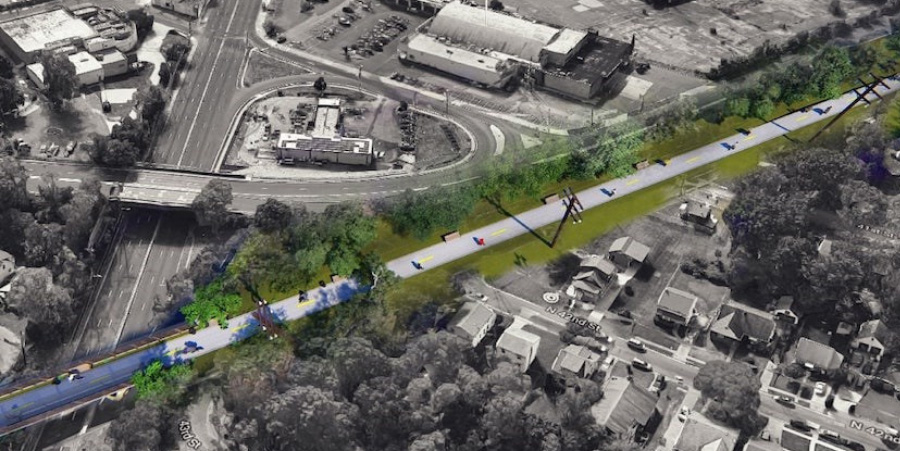
The Burlington-Camden Trail is a 10-mile developing trail that will eventually connect Moorestown with the Delaware riverfront in New Jersey. The trail is an important spine segment of the Circuit Trails network. Crossing multiple jurisdictions, it has been developed by way of a segment-by-segment strategy. For example, one segment in Pennsauken Township utilized state funds for design and federal TA funds for construction. A separate segment received pro bono staff time from a nonprofit organization for a feasibly study, county funding for a bridge conditions analysis, regional funding for design, and county and TA funding for construction. It will be maintained with township funding.
Related: The Burlington-Camden Trail Takes an Important Step Forward | Circuit Trails
State and Local Government Funding
State Funding
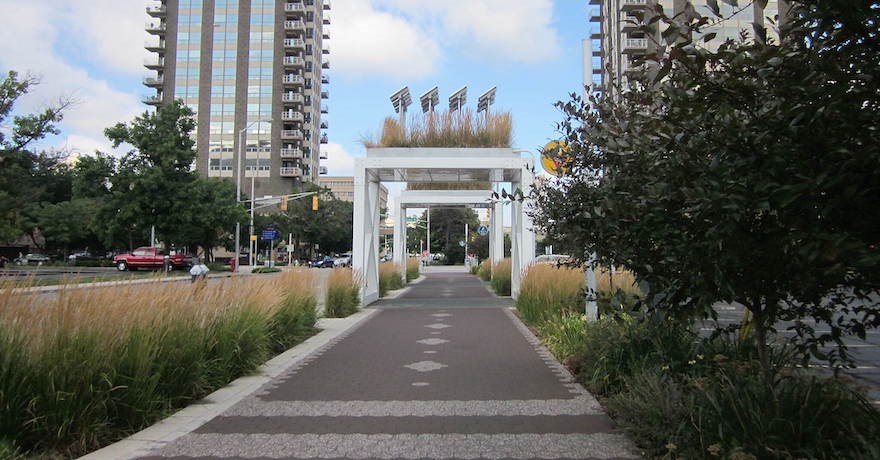
State funding for trail development most often is administered through the state’s transportation agency, or parks, recreation, conservation, natural resources or environmental protection department or agency. A variety of programs are available, including those that provide grants, matching funds and low-interest or interest-free loans. Examples include the following:
- California – Active Transportation Program (ATP): California has consolidated a variety of federal and state funding sources under one umbrella and application process. The robust program is capitalized with billions of dollars, and the concept has been replicated in other states. Notably, 85% of its funds are directed toward projects benefiting disadvantaged communities. Additionally, the ATP supports the Active Transportation Resource Center, offering training, technical assistance and resources to help communities effectively pursue these funding opportunities.
- Florida – SUN Trail Program: The Florida Shared-Use Nonmotorized (SUN) Trail program, established in 2015 and overseen by the Florida Department of Transportation (FDOT), is rooted in the Florida Greenways and Trails System Plan’s Land Trail Priority Network and specific statutes. The program aligns efforts between the Office of Greenways and Trails and FDOT, keeping the goal of an interconnected active-transportation system front and center in two key state agencies. Funding for the SUN Trail program is designated to bridge gaps in the statewide network of paved pathways for cyclists and pedestrians. The aim is to create physically separated trails, with financing sourced from new vehicle registration fees, essentially using revenue from new vehicles to expand trail networks. To date, almost $700 million has been allocated to the program.
- Florida – Trail Maintenance Program: Just passed by the 2024 Florida Legislature, the program will provide $4 million annually to trail mangers to assist with cost-sharing for managing trails. The program will be funded through revenue generated by the gaming compact with the Seminole Tribe.
- Florida – Florida Forever: Founded in 2001, the Florida Forever program devotes 1.5% of annual conservation funds to trails and greenways. Since that time, 155 miles of priority recreational trails have been created under the program.
- Indiana – Next Level Trails: Administered by Indiana’s Department of Natural Resources, the program funds trail projects prioritizing regional or local trails that connect between towns, cities and counties, or that connect to other trails. Through this program, $180 million, the most significant investment in state trail funding in Indiana’s history, has gone to projects like these. Efforts are currently underway to refund the program.
- Ohio – Clean Ohio Fund: The Clean Ohio Trails Fund, part of a broader conservation program passed by bond in 2000, provides grant money for land acquisition and construction of recreational trails. Those applying for funds must provide a 25% local match, although this can include contributions of land, labor or materials.
- North Carolina – Great Trails State Coalition and Year of the Trail: After a multiyear campaign that included an official legislative designation of 2023 as Year of the Trail, the North Carolina General Assembly approved $54 million in one-time funding for new trail development and maintenance, as well as for specific trails.
- Pennsylvania – Growing Greener: Pennsylvania invested $43 million in trails through Growing Greener—administered by four state agencies—from 1995 to 2006. In recent years, funding for the program has decreased, but the program remains “the largest single investment of state funds in Pennsylvania’s history to address Pennsylvania’s critical environmental concerns.”
- Utah – 1,000 Miles Campaign: In 2017, the governor initiated a campaign to build 1,000 miles “of family-friendly bicycle lanes, paths, and trails” in 10 years.
- Virginia – State Trails Office: In 2022, with bipartisan support, the state legislature and governor created a new state trails office, housed within the state DOT, to help administer tens of millions of dollars in state trails funding appropriated that year.
- Washington – Move Ahead Washington: The state’s 2022 major transportation budget package included significant investments in a variety of biking- and trail-related programs.
More examples of successful state funding campaigns and policies (“Success Stories”) and a searchable database of actual state legislation can be found in RTC’s Resource Library.
Comprehensive statewide trail plans can also help identify and facilitate the dispensation of funds. A good plan should rely heavily on collaboration between the state’s parks/natural resources and transportation agencies, with input from other relevant departments such as public health, tourism and education.
Municipal Allocations
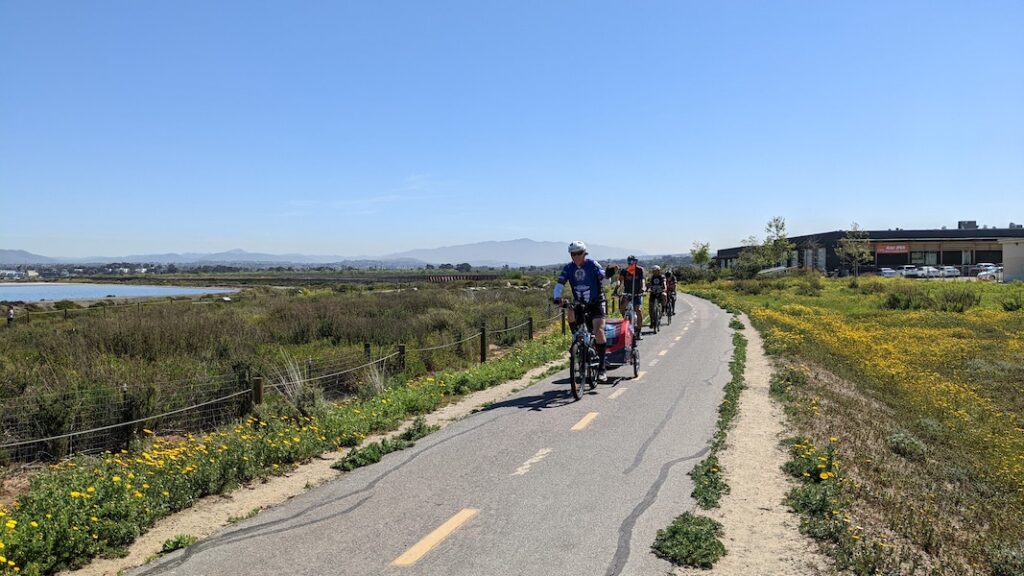
The most common sources of funding at the municipal and county levels include allocations from a specific department, such as the park and recreation department, or a line item in a consolidated capital improvement program (CIP) budget. In some localities, a portion of an increase in the sales tax will be set aside for recreational trail or other conservation funding. Rarely, new taxes will be levied to exclusively support active transportation projects. Some examples include the following:
- Colorado Springs, Colo. – Bicycle Tax: A $4 excise tax on new bicycles sold in the city was enacted in 1988, with the revenue going wholly toward bikeway improvements.
- Columbia, Mo. – Capital Improvement Program: The majority of funding for the planning and construction of the city’s new parks and trails is delineated in Columbia’s annual Capital Improvement Program budget.
- San Diego, Calif. – TransNet: This half-cent sales tax was passed by San Diego County voters in 1988 and extended for another 40 years in 2008. The program has funded planning and construction of bicycle paths and facilities, as well as bike and pedestrian improvements. Some of the regional projects that have benefitted include the Coastal Rail Trail, Inland Rail Trail and Bayshore Bikeway. Neighborhood safety projects have received $15.3 million from this half-cent sales tax since 2008.
- Seattle, Wash. – Bridging the Gap: A property tax levy focused on reducing the city’s transportation maintenance backlog, this program more than doubled Seattle’s annual investment in sidewalks, trails and walkways, and nearly quadrupled the city’s annual investment in bicycle and pedestrian programs. In 2015, it was replaced by the Levy to Move Seattle, which carved out $110 million for pedestrian and bicycle facilities and safety improvements over its nine-year lifespan.
- St. Louis Region, Mo. – Great Rivers Greenway: The passage of Proposition C in 2000 created a 0.1% sales tax for parks and open spaces that led to the formation of the Great Rivers Greenway District, a nonprofit organization spearheading an interconnected system of greenways, parks and trails in the region.
Bond Issues
Local revenues may also be raised through bond issues. Mounting a successful bond campaign is like running any other campaign: You need strong citizen support, participation by local officials and business leaders, and hard work. As evidenced above, some communities have also passed referenda to specifically fund trail and greenway projects. The Trust for Public Land maintains LandVote, a database of these local and state referenda.
Impact Fees
Regulated by county and municipal subdivision policies, impact fees require residential, industrial and commercial development project leaders to provide sites, improvements and/or funds to support public amenities such as open space and trails. Impact fees may be allocated to a particular trail from land development projects if the fund is a dedicated set-aside account established to help develop a countywide or citywide system of trail projects. Contact your county or city planner to find out more about impact fees for your area.
Growth impact ordinances are enforced by counties and cities to estimate the impact of all residential, industrial and commercial development on public parks and recreational facilities within a development project’s local and regional service zones. The ordinance makes provisions whereby the project developer will set aside the lands or monies necessary to offset the project’s specific park and recreational impacts. Another method of raising funds is through a direct property tax. Again, contact your county or city planner for more information.
Five Helpful Tips When Applying for Funding
#1: Define “success.”
- Begin by ensuring that all stakeholders, partners and collaborators are not only identified but are actively engaged and committed to the project’s objectives.
- Ask essential questions to gauge the project’s feasibility and potential impact: Are the right partners and stakeholders involved, advocating and contributing to the project’s success? How will progress and accomplishments be quantitatively and qualitatively measured?
- Assess the agency’s internal capacity, including grant writers, resources and expertise, to ensure that the envisioned outcomes are achievable within the specified timelines and constraints. Many grant programs require a government entity to submit applications and serve as the project lead. Determine who should serve in this role as early as possible.
- Showcase any existing successes or pilot initiatives that resonate with the project’s goals.
By addressing these pivotal aspects and consistently matching actions with measurable outcomes, you not only enhance credibility with the grantor but also create a strong foundation for real success.
#2: Create a plan to complete the application on time.
Once you’ve identified the best funding sources for your investment strategy, create a plan to execute the grant application in the allotted application window.
- Address all grant-related inquiries, including environmental clearances and construction timelines. It’s a good idea to complete these as early as possible.
- Assemble a grant-writing team to provide support throughout the process, ensuring each member is clear on their specific roles, responsibilities and deadlines.
- Designate individuals responsible for reviewing the documents at each stage, establishing a seamless workflow and fostering accountability and efficiency throughout the application process.
- Reach out to project partners and local officials to collect letters of support for your grant application.
This strategic approach will enhance your chances of meeting deadlines and submitting a thorough and well-prepared application.
#3: Be clear and concise.
Given the high volume of applications a grant program typically receives, prioritize clarity and brevity in your submission.
- Place crucial details about your project at the forefront of the application to facilitate easy review.
- Clearly and succinctly articulate the project’s purpose, funding request and key partnerships.
- In adhering to a notice of funding opportunity (NOFO), focus on addressing primary criteria, as reviewers typically prioritize these aspects. A strong initial score in these primary criteria is vital, as projects with lower scores may not progress to the review of secondary criteria.
#4: Think collaboratively and demonstrate support.
In crafting a compelling grant application, the essence of collaboration cannot be overstated.
- Build and foster strong relationships with key supporters well before applying for funding.
- Seek active involvement from prominent stakeholders, such as mayors, members of Congress and other prominent local leaders to build political will for your project and demonstrate a broad base of support.
By leveraging the expertise, resources and perspectives of various departments and key players, you create a more holistic and robust proposal that resonates with stakeholders and decision-makers alike.
#5: If at first you don’t succeed, try, try again.
If your application is unsuccessful, seek feedback.
- Meet with the grantor to understand the reasons the project did not receive funding.
- Incorporate feedback in future applications.
When applying for funding for a second time, be sure to incorporate all grantor feedback to improve your application. This may also serve to build familiarity with your project. Being open to making changes and staying determined will make your project more likely to succeed in future attempts.
Private Funding and Other Creative Funding Methods
Revenue From the Corridor Itself
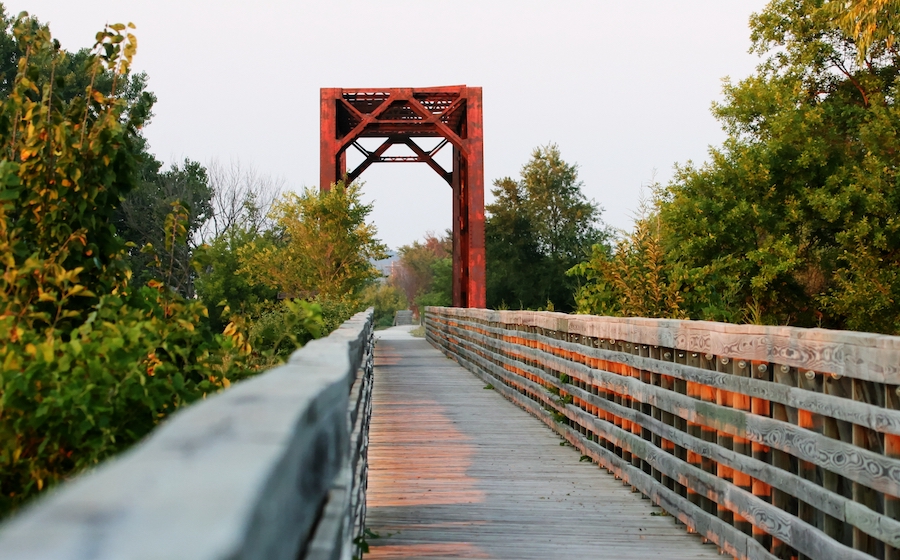
Salvaging Material
The rails, ties, ballast and other improvements made to the corridor have salvage value and should not be overlooked. Revenue generated from the selling of these items varies widely, depending on local markets, the length of the corridor and the quantity of salvageable materials. Nebraska’s Cowboy Trail, for example, helped fund the purchase of its corridor by selling salvageable material. However, salvageable materials often have been sold—legally by the railroad or illegally by waste pickers or adjacent landowners—by the time a trail corridor is in public ownership.
Leasing to Utilities
A growing source of trail development funds is coming from the leasing of subsurface rights for fiber-optic cables and other utilities. Compatible co-uses of a rail-trail corridor include sewer, water and natural gas. Occasionally, above-ground utilities such as telephone and overhead electric lines can successfully share a corridor with a rail-trail. In the past, utility companies have also bought abandoned corridors and then donated the land for trail use. Abandoned railroad corridors can provide key links for utility use, so working cooperatively with local utilities can help pay for your trail. For more information on this type of co-use, look in the Utilities section of the Trail-Building Toolbox.
Private Funding Sources
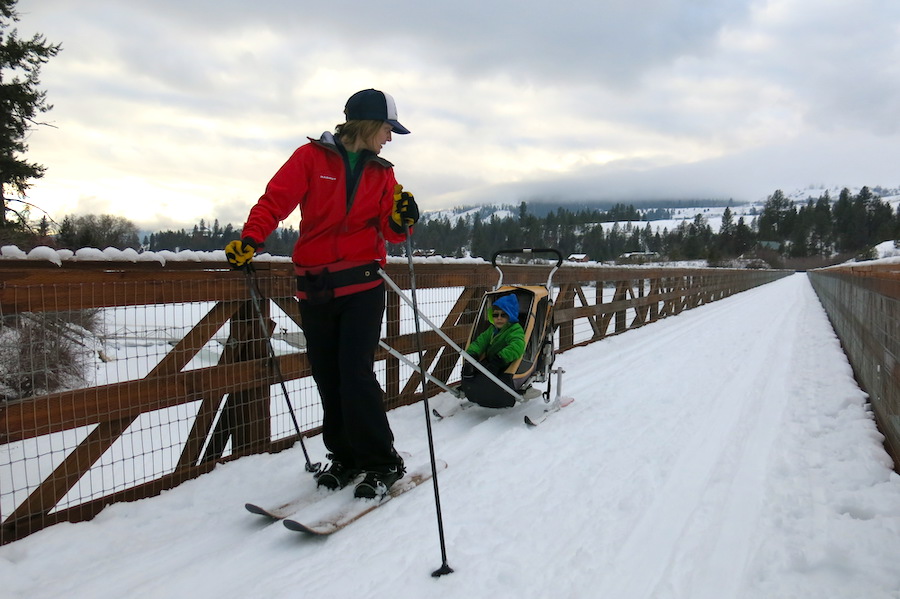
Funds can be obtained from private sources in countless ways—from holding bake sales to soliciting foundation grants. But when fundraising, be sure to have a specific goal in mind. As one contributor to the RTC Listserv notes, “It is always easier to raise money when you have a specific operational purpose (e.g., land acquisition or land management) as opposed to general organizational needs.” Of all the potential types of funding, private funding sources provide trail builders with the greatest amount of flexibility and opportunity for creative approaches.
Campaigns and Donations
Communities across the country have raised money for the development and maintenance of their trails and greenways through various fundraising campaigns. Some groups have “sold” pieces of trail, providing each donor with a “deed” for their segment of the trail. Other groups have also sold trail amenities, such as benches and trees. But donations can be creative; use whatever resources you have! For example, RTC worked with Bob Whittaker, who manages the tours of the rock group REM, to advance the progress of Washington’s Ferry County Rail Trail. As part of his fundraising effort, Whittaker asked the band for an autographed guitar to auction off for the trail. The subsequent sale on eBay earned about $1,500 for trail development.
Trust Funds or Endowments
These sources can be set up to aid funding for acquisition, construction or maintenance, and can be administered by a nonprofit group or local commission. Funds can be contributed to a trust fund from government sources, private grants and gifts. A $6 million maintenance endowment was built into the initial capital fundraising campaign for the Indianapolis Cultural Trail to fund operations and maintenance. The money comes from philanthropic, corporate and individual giving. The maintenance endowment is part and parcel of all capital campaigns and expands as the Indianapolis Cultural Trail expands.
One contributor to the RTC Listserv notes that transparency is important with a trust fund, stating, “If you do set up a dedicated endowment for land management, I would recommend keeping the endowment’s books open to the public and [providing] members and donors with annual financial reports for the endowment.”
Foundation and Company Grants
Many foundations and companies provide grants for trail and greenway projects, open space preservation, community development and community health. To obtain larger contributions from foundations or corporations, you will need a full-fledged funding proposal that illustrates the communitywide value of the trail and describes how it will be developed and maintained. Here are just a few examples of grants from private sources that can be used for trail-building:
- The PeopleForBikes Community Grant Program provides funding to bike advocacy and facility-building projects.
- The Conservation Fund’s Conservation Loan Program provides loans to quickly purchase high-priority lands.
- The American Hiking Society awards grants from its National Trails Fund for the establishment, protection and maintenance of trails in the United States.
- The outdoor goods company REI invites nonprofits nominated by its employees to submit proposals for funding. The company offers grants to support efforts “to care for public lands, natural areas, trails and waterways.” A recent recipient of an REI grant was Friends of the Wissahickon’s Sustainable Trails Initiative.
- The Conservation Alliance, a group of more than 180 outdoor businesses, including Patagonia, The North Face and Kelty, disbursed $1.65 million worth of grants in 2014, with a focus on habitat conservation and recreation.
- The Walmart Foundation provides grants to local communities and nonprofit organizations. These grants range from $250 to $2,500 and are awarded through each Walmart and Sam’s Club store.
Be Creative!
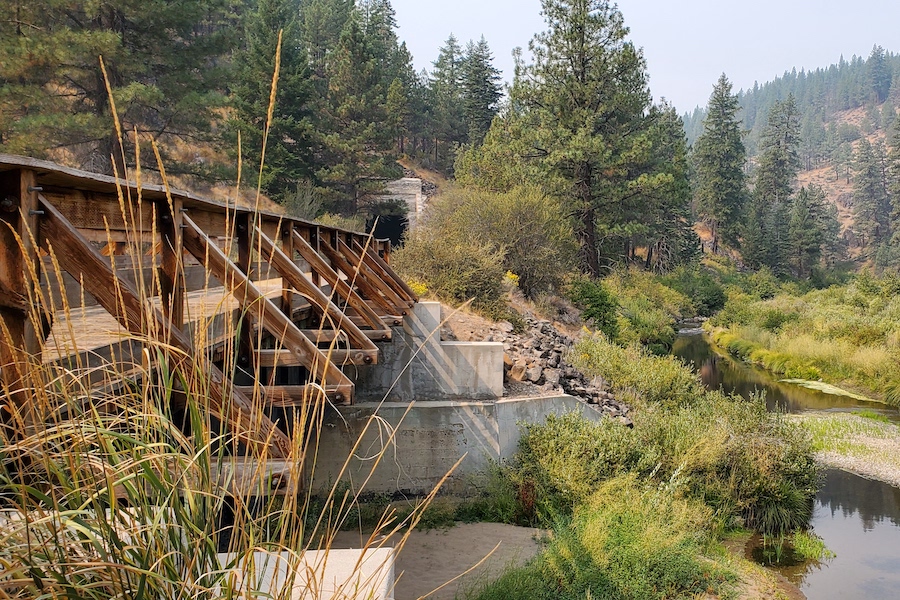
You don’t need to fill out a grant application every time you need funding. From partnering with local businesses to holding a large event, there are many ways to think outside the box while raising money and awareness.
Partnerships
Explore the possibility of creating partnerships to build and maintain your trail or greenway, potentially through an “Adopt-a-Trail” program. These can be important for not only constructing and maintaining your project, but also building community pride. Try contacting businesses in your area to see if they offer any kind of community support programs. Whole Foods Market, for example, hosts several 5% Community Giving Days at each store annually to support the work of community nonprofits.
Don’t be shy about appealing to local clubs for volunteer assistance. The Boy Scouts, Girl Scouts, Sierra Club, biking and trail clubs, birding clubs and local civic clubs are all potential sources of help.
Events
Who doesn’t enjoy good music, food and company? In June 2008, the Lassen Land and Trails Trust put on Bridgefest, a two-day music festival in Susanville, California. The proceeds were donated to the trust’s Trails Endowment Fund, which worked to raise money to rebuild a bridge along the Bizz Johnson Trail, which burned in a 2000 wildfire. Trail builders and managers can organize fundraising events such as dinners, parties, festivals, fairs, raffles or concerts to raise funds near the trail. Or try events along the trail route itself, such as a hike-a-thon, walk-a-thon, bike race or foot race.
One creative RTC Listserv contributor suggested holding a “poker run” along the length of the trail, where trail supporters collect cards along the way and the finisher with the best hand wins a prize.
Volunteer Opportunities
Military units with construction expertise are sometimes willing to assist with construction of trails on federal land. One RTC Listserv contributor worked with the Washington Air National Guard and the 864th Engineering Battalion to completely refurbish railroad bridges along the Foothills Trail in Pierce County, Washington. While not a source of funding, this resource could be helpful for some trail projects.
The Take Pride in America program, operated by the U.S. Department of the Interior, serves to mobilize civilian volunteers to help improve federal lands. The Corporation for National and Community Service runs numerous volunteer programs, including AmeriCorps, which could provide useful labor for your trail. Many national parks and other federally managed lands also operate Youth Conservation Corps programs, which could likewise provide labor for your trail project.
Public Art Funding Sources
Many trails feature art as a core component, such as along the Steel Valley Trail section of the Great Allegheny Passage near Pittsburgh. Funding sources for public art can often be found at the state level; the Maryland State Arts Council, for example, offers a grant program for public art. The National Assembly of State Arts Agencies can guide you to your state’s arts agency with their , for example, offers a grant program for public art. The National Assembly of State Arts Agencies can guide you to your state’s arts agency with their national directory. On the federal level, one of the most well-known resources is the National Endowment for the Arts, which operates numerous grant programs supporting public art. The National Trails Training Partnership features a section on art for trails and greenways.national directory. On the federal level, one of the most well-known resources is the National Endowment for the Arts, which operates numerous grant programs supporting public art. The National Trails Training Partnership features a section on art for trails and greenways.
For information on funding options for ongoing rail-trail maintenance, please visit our Maintenance Funding Toolbox page.
Resources
‣ Manual – Acquiring Rail Corridors: A How To Manual (see chapter 7, “Financing Your Acquisition”)
‣ Fact Sheet – Local Funding Sources
‣ Fact Sheet – Justice40 Covered USDOT Programs with Match Flexibility
TrailNation Collaborative
TrailNation™ Collaborative is a nationwide peer learning community from Rails to Trails Conservancy that brings together advocates, leaders and professionals from across disciplines to establish and accelerate trail networks across America. The collaborative provides proven tools, methods and resources, combined with RTC’s expertise and network of partners across the country, to accelerate the development of connected trail systems. When trails are connected across regions and states, trail networks have a proven transformative impact—they are essential infrastructure that creates thriving, healthier communities.